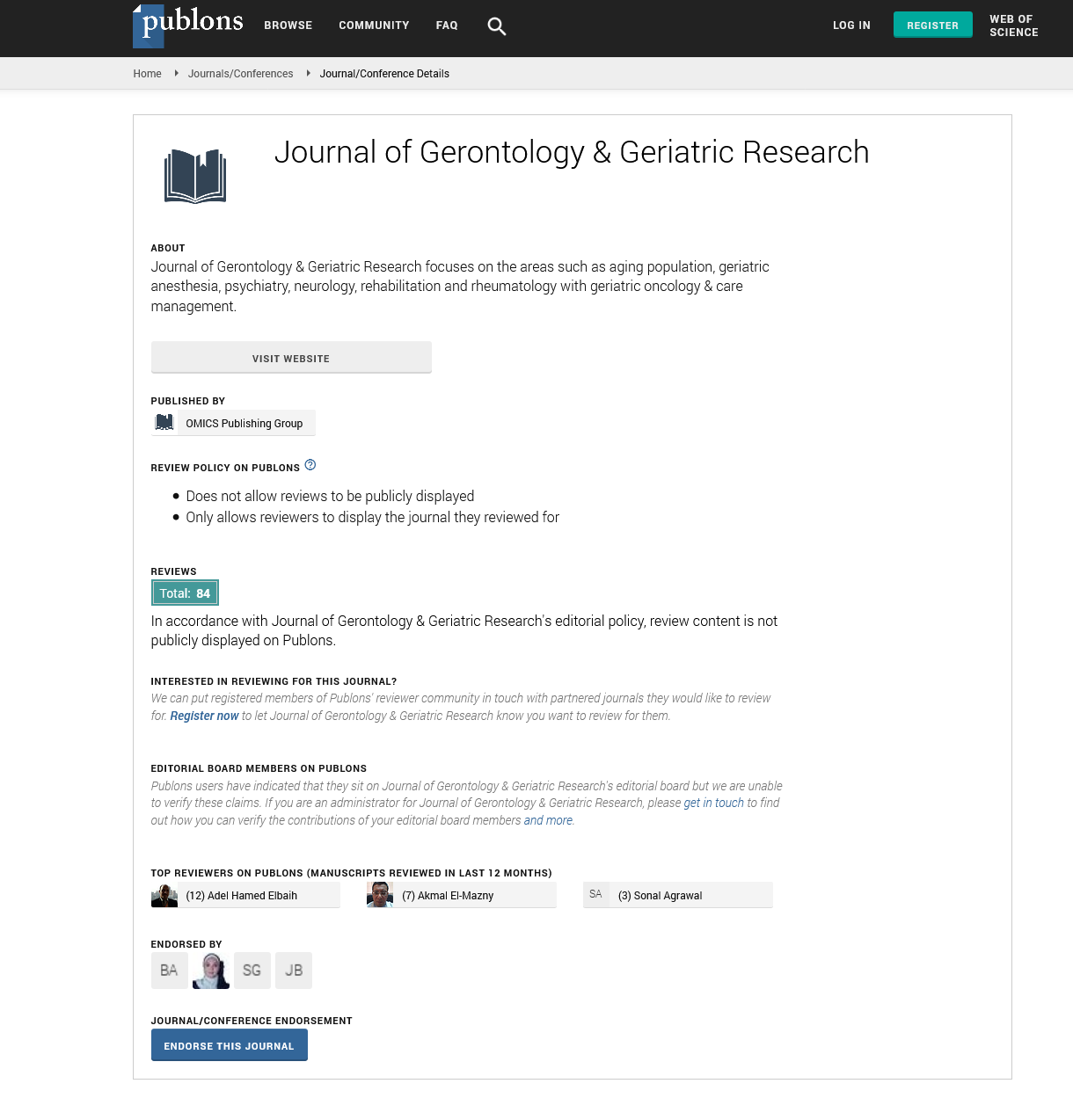Indexed In
- Open J Gate
- Genamics JournalSeek
- SafetyLit
- RefSeek
- Hamdard University
- EBSCO A-Z
- OCLC- WorldCat
- Publons
- Geneva Foundation for Medical Education and Research
- Euro Pub
- Google Scholar
Useful Links
Share This Page
Journal Flyer

Open Access Journals
- Agri and Aquaculture
- Biochemistry
- Bioinformatics & Systems Biology
- Business & Management
- Chemistry
- Clinical Sciences
- Engineering
- Food & Nutrition
- General Science
- Genetics & Molecular Biology
- Immunology & Microbiology
- Medical Sciences
- Neuroscience & Psychology
- Nursing & Health Care
- Pharmaceutical Sciences
A NOVEL EXERCISE INITIATIVE FOR OLDER ADULTS TO REDUCE FALLS RISK AND IMPROVE PHYSICAL FUNCTION
2nd International Conference on Aging & Gerontology
June 26-27, 2017 San Diego, CA, USA
M Sales, P Levinger, R Polman & KD Hill
Victoria University, Australia
Bournemouth University, UK
Curtin University, Australia
Posters & Accepted Abstracts: J Gerontol Geriatr Res
Abstract:
Statement of the Problem: Preventing falls, improving muscle strength, balance and physical function among older adults are key public health priorities. To this end, a unique purpose-built exercise park was designed to provide a fun but physically challenging environment to support exercise for older adults in a community setting. Thus, this study aimed to investigate the feasibility, effectiveness and effects of an exercise intervention using a novel purpose-built exercise park in improving seniorÔ??s balance, physical function and quality of life. Methodology & Theoretical Orientation: This study was a randomised controlled trial with pre and post intervention design (baseline and at 18 weeks after participation commencement with a falls record over a 12-month period). Independent community dwelling adults aged between 60 and 90 years old were randomised to either an eighteen-week exercise park intervention group (EPIG) or a control group (CG). Primary outcome measure was the Balance Outcome Measure for Elder Rehabilitation (BOOMER). Secondary outcomes included measures of balance, strength and function as well as quality of life and fear of falling. Multivariate analysis of covariance was used to assess differences between groups and groups over time. Findings: Twenty-seven participants from EPIG completed the 18-week intervention (87%) with attendance of 79.6%. No major adverse events were reported. Significant improvement was observed for the EPIG group on single leg stance (p=0.02, 95%CI -8.35 to -.549), knee strength (p<0.01, -29.14 to -5.86), two-minute walk test (p=0.02, -19.13 to -.859) and timed sit to stand (p=0.03, -2.26 to -.143), although there was no difference in the BOOMER battery test (p=0.46, -.354 to .830). Conclusions and Significance: The 18- week exercise park program improved physical function in older people and had high adherence and participation rate. The exercise park program has been shown to be safe and therefore might enhance exercise participation in exercise programs for older adults in the community.

